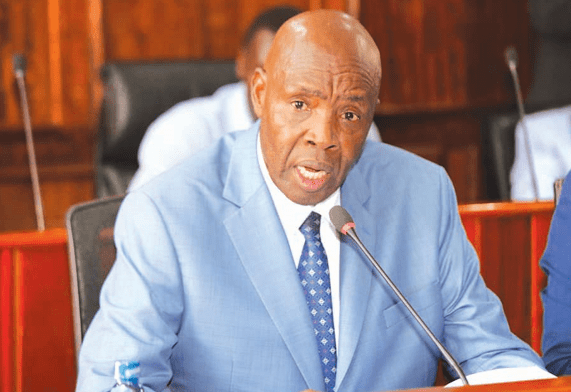Uncertainty over JSS intern teachers employment
By Reuben.Mwambingu, July 1, 2024The employment terms for 46,000 intern junior school teachers, set for absorption into permanent and pensionable positions, are now uncertain following the Finance Bill’s rejection, Education Cabinet Secretary Ezekiel Machogu (left) announced.
During a press briefing after gracing the closing ceremony of the just concluded 47th Kenya Secondary Schools Heads Association Annual National Conference in Mombasa, Machogu said the government must now reassess its fiscal priorities.
“We need to see the priorities that we can cater to and identify any budget items that can be removed. The president has outlined certain aspects for this year’s budget, but given the current situation, we must revisit our plans. While I can’t provide a definitive answer now, the 46,000 JSS teachers remain a priority,” he said.
The 2024–25 budget had allocated Sh13.4 billion to promote these intern teachers to permanent status. Machogu emphasized that the Presidential Working Party on Education Reform, after consulting stakeholders and the public, recommended retaining the 2-6-3-3-3 educational structure.
This system encompasses two years of pre-primary, six years of primary, three years of junior secondary, three years of senior secondary, and a minimum of three years at university.
Approved by Parliament
“This structure is founded on Sessional Paper No.1 of 2019 and the Basic Education Curriculum Framework of 2017, both approved by Parliament. Junior schools will remain within primary schools, leveraging existing facilities and reducing costs, with 93 per cent stakeholder support,” Machogu noted.
To prepare for Grade Nine next year, the government has allocated Sh3.5 billion for 1,000 new classrooms in primary schools, and an additional Sh3.9 billion through the National Government–Constituency Development Fund for further classroom construction.
At the senior school level, three pathways will be introduced under the Competency-Based Curriculum: STEM, Social Sciences, and Arts and Sports Science.
Machogu detailed out plans for categorizing schools and guiding students into the three pathways based on performance and interests. “Some schools will offer all three pathways, while others will provide at least two, depending on their capacity. We are also developing a framework for resource sharing between schools and higher institutions to optimize facilities and expertise,” he explained.
More Articles

